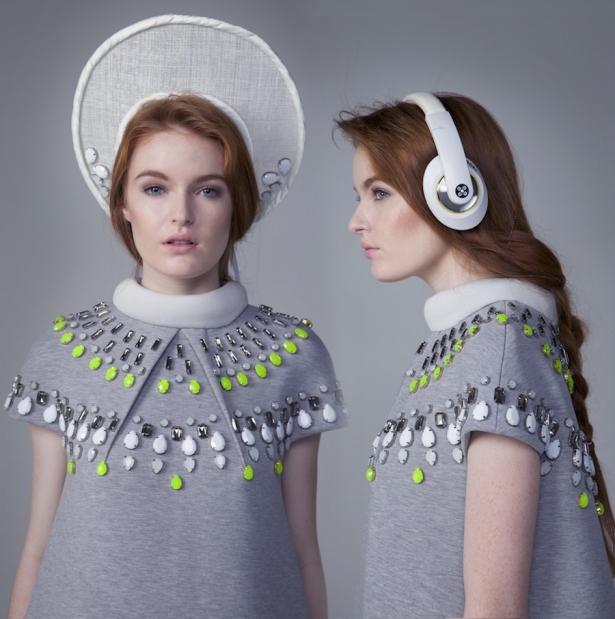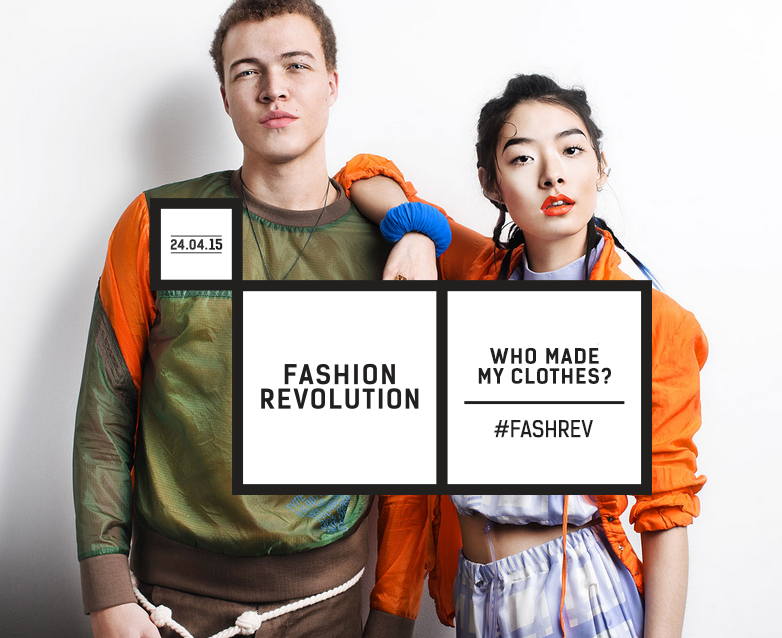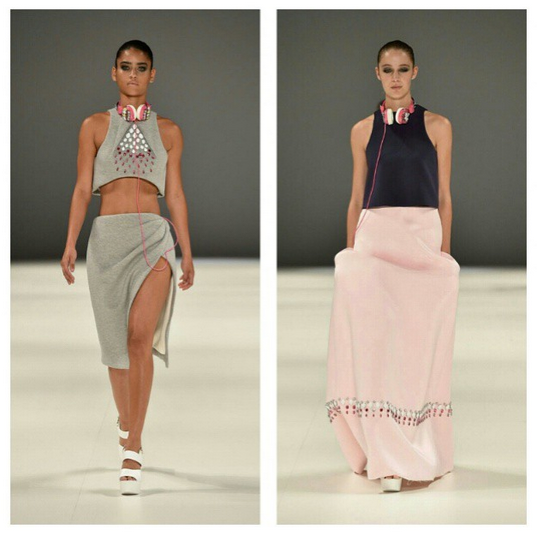Jai Saunders is one of the six young ‘Innovators’ showcased at the Mercedes Benz Fashion Week Australia. The evolution of the Australian fashion industry is in the hands of young talents like her. Here are her thoughts on the future of fashion.
“As a country we’ve begun to embrace the fact that we are an Asia-Pacific nation rather than connected to the European motherland, or indebted to the American superpower.”
Mercedes Benz Fashion Week Australia not only revealed established designers’ new collections; it also showcased emerging designers. Jai Saunders presented a very interesting collection, juxtaposing Russian folk costumes and a modern city style. Her models were akin to babushkas living in New York City. We loved her creative approach and decided to have a chat with her.
Fashion has become global. However, each country has its own fashion industry. How would you describe Australian fashion on the global scene?
The cultural cringe and myth of Australia being a season behind the trends is no longer necessarily true. With our global society there is no reason that Australian designers and brands don’t have access to the same ideas, forecasting agencies as the big European brands. It is increasingly through an Australian lens that we translate international fashion trends, rather than following what happens in NY or London. The big brands still hold an enormous sway in the industry and do tend to influence what direction trends turn, and also what trends the customer will be demanding.
I think the great thing about Australian fashion is that we no longer feel we need to slavishly follow the international trends; we are confident enough to create and follow our own trends. I recently read a piece describing the dramatic evolution of Australian fashion over twenty years of Australian Fashion Week. The article pointed out that the latest Romance Was Born’s celebrated collection “Cooee Couture” would have been unthinkable at the first Australian Fashion Week. Since then we have embraced our own culture, albeit in a small way, but in the face of incoming foreign high street brands our ability to offer something different and quintessentially “Australian” is the one thing that global brands like Zara cannot do.
As a country we’ve begun to embrace the fact that we are an Asia-Pacific nation rather than connected to the European motherland, or indebted to the American superpower, and this translates into our fashion industry. To a degree we have divorced ourselves from the traditional fashion capitals and have embraced and celebrated our own ideas and aesthetic. A lot of Australian designers made it big overseas by following their own label’s aesthetic and keeping their Australian design. In general Australian fashion has an easiness to it, a level of casualness, no doubt due to the stereotypical Australian lifestyle – even if the average Australian might not be living that relaxed life. However, casual does not mean unsophisticated design.
How are you relevant and differentiated amongst the global offerings of world fashion?
I am still developing as a designer, although I wonder if you should ever stop developing. It is difficult to place emerging labels amongst the constellation of global brands. For the first few years you’re still finding your feet, establishing a customer following, and as you are warned time and again, if you make a profit within three years, you are lucky!
I think all I can do to ensure my label is relevant in the industry is stay true to my own aesthetic. So far, following my own path and having a strong vision for the label, I’ve been very lucky and blessed that peers and mentors have seen something in what I do that has been worthy of MBFWA. At the same time you certainly cannot rely on luck or the goodwill of others. The industry is a really difficult market to break into: I know a few emerging brands that were going strong just two or three years ago, but have exited the scene since then. Being realistic and having sound financial goals is perhaps not the most romantic, creative aspect of designing, but it is the only way to ensure success. And maybe one day, I can count myself among the “global offerings” in the fashion world.
Does sustainability matter to you when it comes to production? How?
Sustainability is a really important issue in the industry. Designers have a responsibility to ensure that the production of their clothes does not take advantage of people and the environment. This problem is prevalent and it is something that will take time to turn about because it is embedded in how a majority of brands produce, be it knowingly or unknowingly. In the end it is about basic human rights, and I know I would be devastated to learn my label was responsible for the continuation of poverty, less than human living conditions, or environmental devastation.
Ethical, sustainable production is something that brands will have to be increasingly transparent about. Disasters like the Rana Plaza collapse in Bangladesh really pushed the issue into the spotlight, making the general public aware, and hopefully more demanding about transparent production lines from the brands that they buy. Movements like #whomademyclothes from Fashion Revolution helps to keep the issue in people’s minds. Hopefully the next time the average consumers buy that “five-dollar tee”, they might pause to think about the ethical connotations behind the price. Changing how consumers think about where and how their clothes are made is the only way big changes in the industry are going to occur.
What do you think the fashion industry will be like in twenty years? Do you see big changes coming?
Fashion is so cyclical, in twenty years we might be back to where we are now! The real changes are going to come about through technological evolutions. New fabrics are going to emerge that will no doubt influence design. Cotton is one of the most basic, popular fibres in the world, but it is also one of the most water-reliant fibres we produce. Improvements in organic cotton, whether genetically modified or not, or the prevalence of more sustainable natural fibres like hemp and bamboo are going to change how we view natural vs man-made fabrics.
“Fashion is so cyclical, in twenty years we might be back to where we are now!”
There are already headways into producing synthetic leather, grown in a lab that can theoretically be grown to any shape, thickness and colour to suit specific purposes. Smart fabrics that react to light, heat, dirt, etc. or non-traditional, non-wovens like “spray-on fabric” aren’t far away either. The interconnectivity of the world has already had a massive impact on how brands and designers interact with customers. It will continue to evolve, influencing changes in the industry from the first stage of design right through to sales and post-sale.









